Trip Report Plymouth 12-13 July 2023
In the good old tradition of OUUEG Plymouth trips, we went down to Devon to spend a weekend diving off our own club RHIB, which had just been refurbished, re-tubed and put back to its mooring place at Plymouth Yacht Haven Marina near Mount Batten.
We got some nice accommodation in a private hostel/hotel, the Lake House in Hooe, only 3 minutes away from the marina. It wasn’t overly expensive, clean, quiet, and definitely an upgrade from the bunk house we usually stay in, however, I missed a communal area a bit, and we had to gather in one of the bedrooms for breakfast. Still, I would go back, since the location was so convenient!
Our Saturday started with an early rise, we planned to hit the morning slack tide. Weather forecast promised a force 5 gusting 6 from SW, and we decided that getting out of the Sound wasn’t practical and we would try to dive sites on the Western end inside the Sound, for example Barn Pool. Upon arriving at the marina and inspecting the boat, however, we found out that the seams in the bow tubes had come apart!
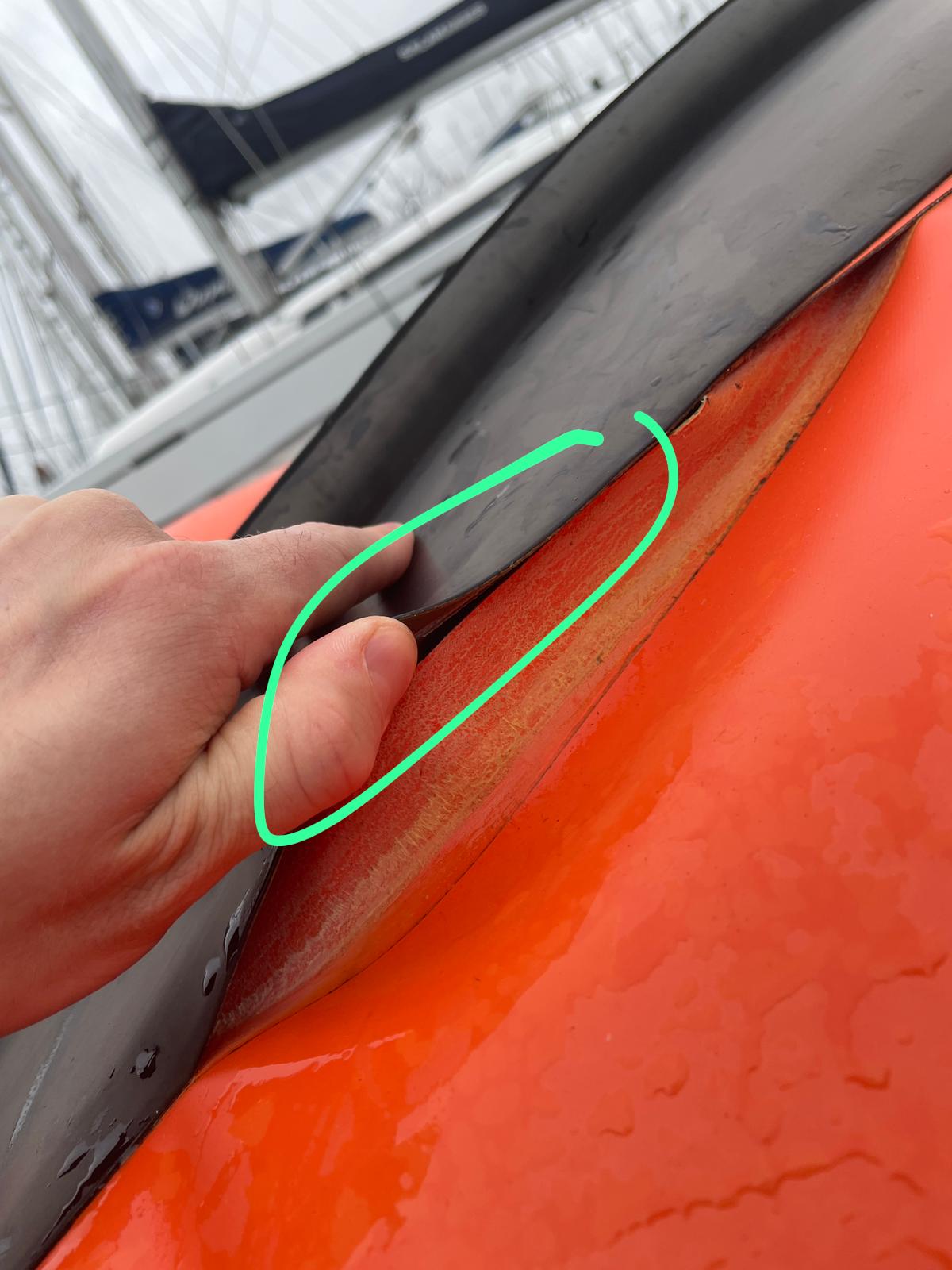 Seahorse looking sad
Seahorse looking sad
The whole bow had deflated. For a bit, we considered patching it up ourselves, but although we had glue, we had no means of applying pressure to it, plus it would invalidate any warranty, and decided that our boat diving trip had just ended. (An ad-hoc task force of several OUUEG members managed to schedule retrieval of the boat and repair for two days later).
Dive 1 — Mount Edgecumbe Ferry
So, what now? Shore diving it was! We decided to stick to the western side of the Sound as planned, and drove over to Cornwall. Our first dive site was at the Beach just south of the Cremyll Mount Edgecumbe Ferry landing, to the north of our originally planned site, Barn Pool, and a few 100m opposite of Devil’s Point in Plymouth (it would have taken us 15min to get there by boat, but took us 1h by car…)
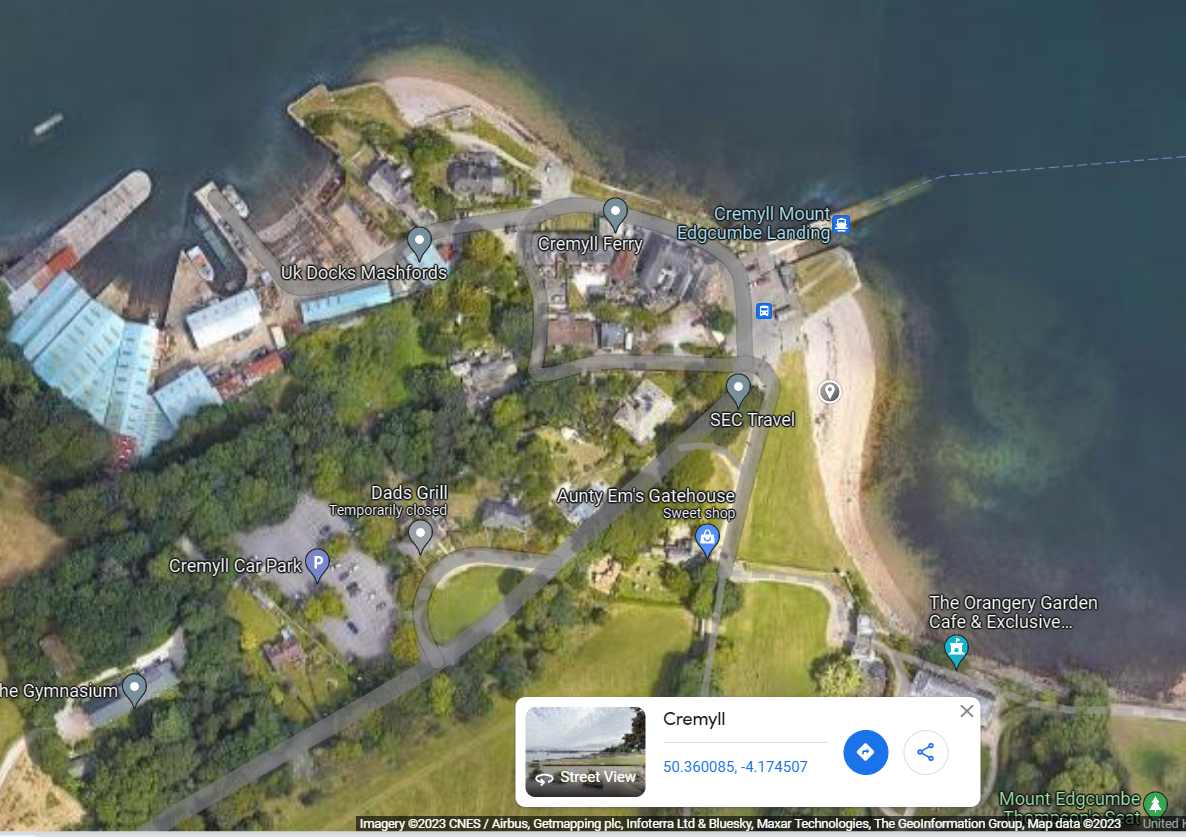
The site has very good infrastructure. Kit can be dropped of at the ferry terminal, either quickly using one of the disabled bays or in the bus turning area. Just make sure you don’t obstruct anybody. The cars can then be parked at Cremyll Car Park, which is pay & display and costs £4.00 for the day — a reasonable price. It is a very short walk from the car park to the beach and could probably be done with kit as well, if you are not using twin twelves… Public toilets are in a little side road just opposite the beach, and there even is a pub for meals and refreshments.
Diving from the beach is straightforward, but a few things should be kept in mind:
- Avoid the ferry landing at all costs. The ferry skipper is not happy at all with divers being around. Even though we stayed well away from him, he complained to the harbour authority.
- Check in and ask for permission with the King’s Harbour Master Plymouth, call sign “Longroom” on Channel 14 VHF radio, or phone 01752 663225. Remember to check out again.
- Make sure you hit slack tide. According to the charts, a few meters from the beach there is a steep drop-o to about 40 m, which promises an awesome wall dive.
We missed slack tide (due to the boat faff) and dived it on an incoming tide. Although we tried to get to the wall, the current got too strong when we went too far from the beach, so had to stay in the shore area for the whole dive, not going deeper than 9 m.
The bottom was mostly cobbles and pebbles, overgrown with seaweeds, and some sandy patches in between. Even though we didn’t make it to the wall, there was still lots to see - gobies, crabs, and a lot of invertebrates.
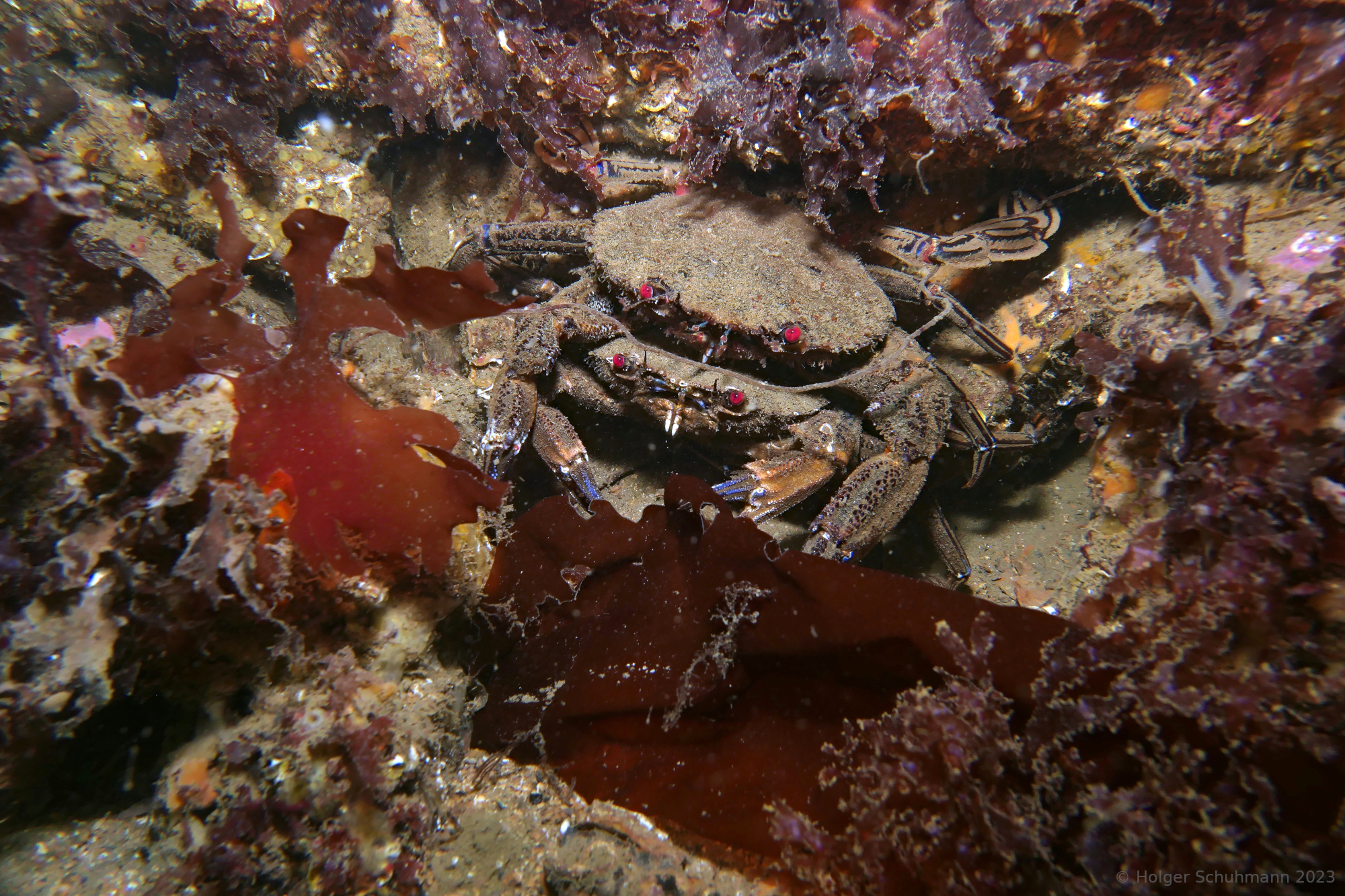 Mating velvet swimming crabs
Mating velvet swimming crabs
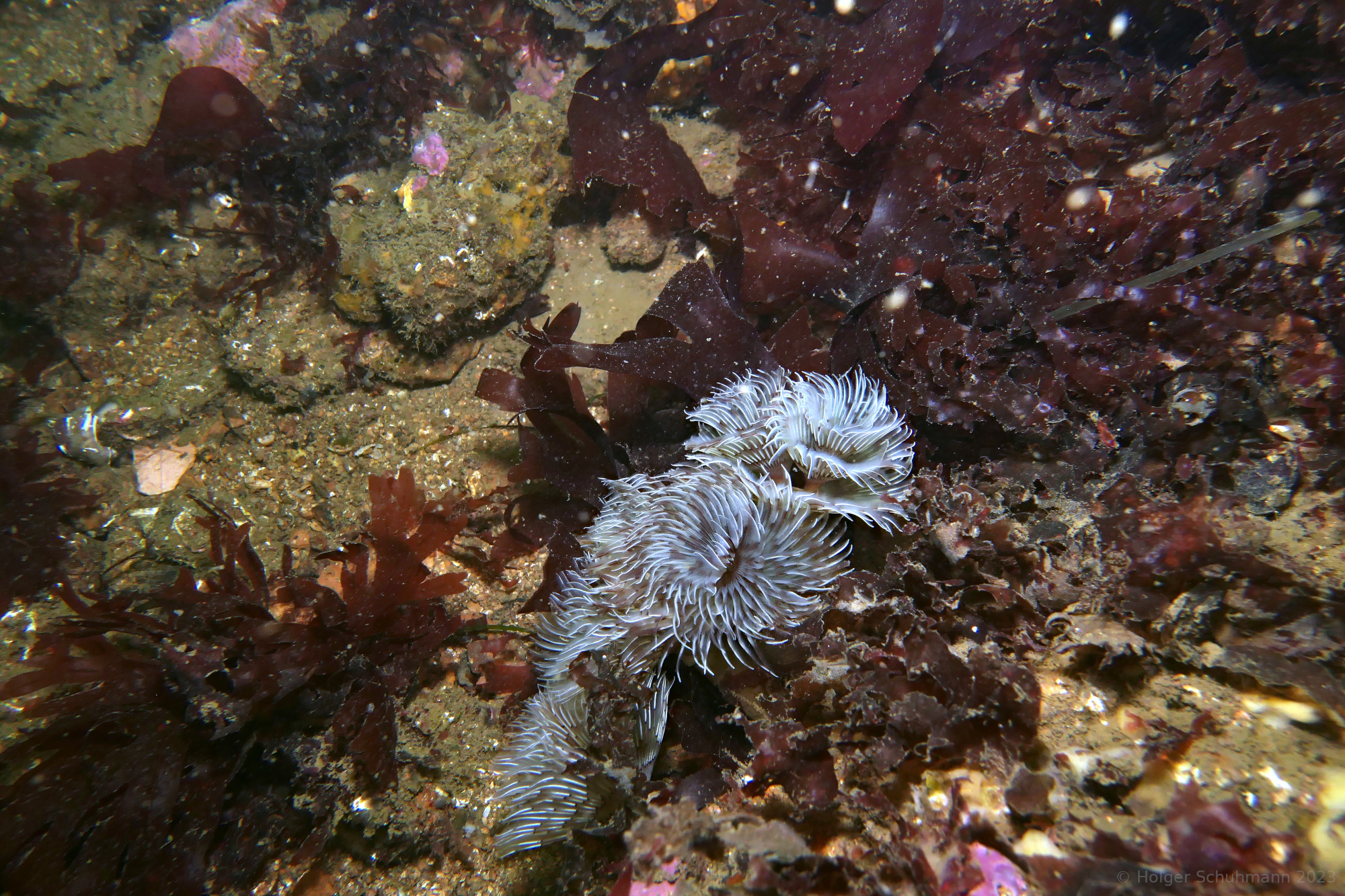 Encrusting sea squirts, sponges, and red seaweeds
Encrusting sea squirts, sponges, and red seaweeds
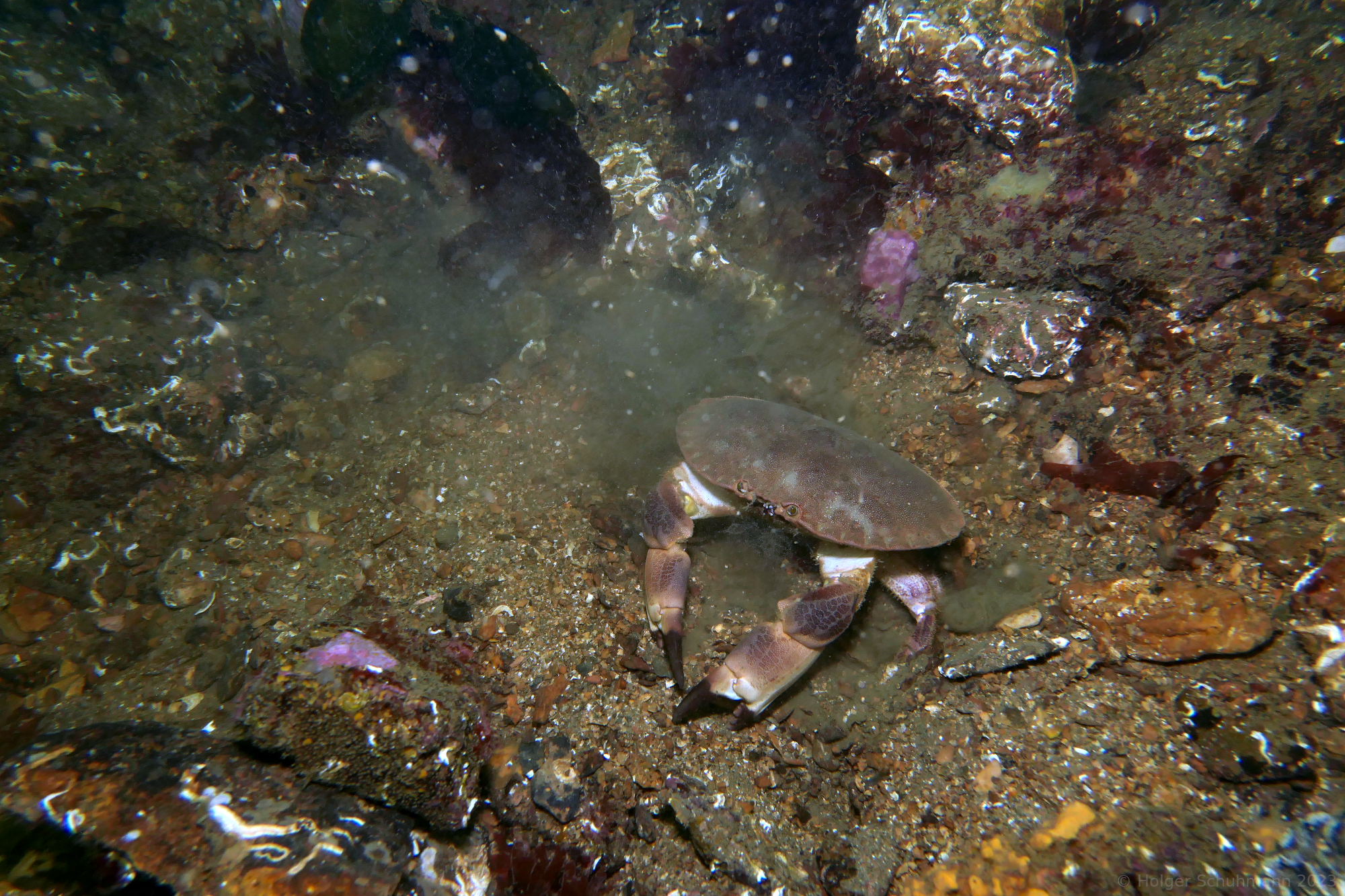 Edible crab kicking up the silt
Edible crab kicking up the silt
Overall, Mt Edgecumber Beach was a nice gentle dive, which probably would have been much nicer if we hadn’t missed slack tide and been able to go to the wall part.
Dive 2 — Wearde Quay
Our second dive of the day was at a fairly “exotic” site, Wearde Quay at the confluence of Lynher River and River Tamar, still on the Cornwall side. Despite the word “river”, it was clearly a marine environment, and we had a bit of a current running because, again, we missed slack tide.
Parking is a bit of an issue at the site. There are some spaces for locals, and we obtained permission to leave some of our cars there while we were underwater, but the only other reasonable space to leave a car is on the road near the allotments.
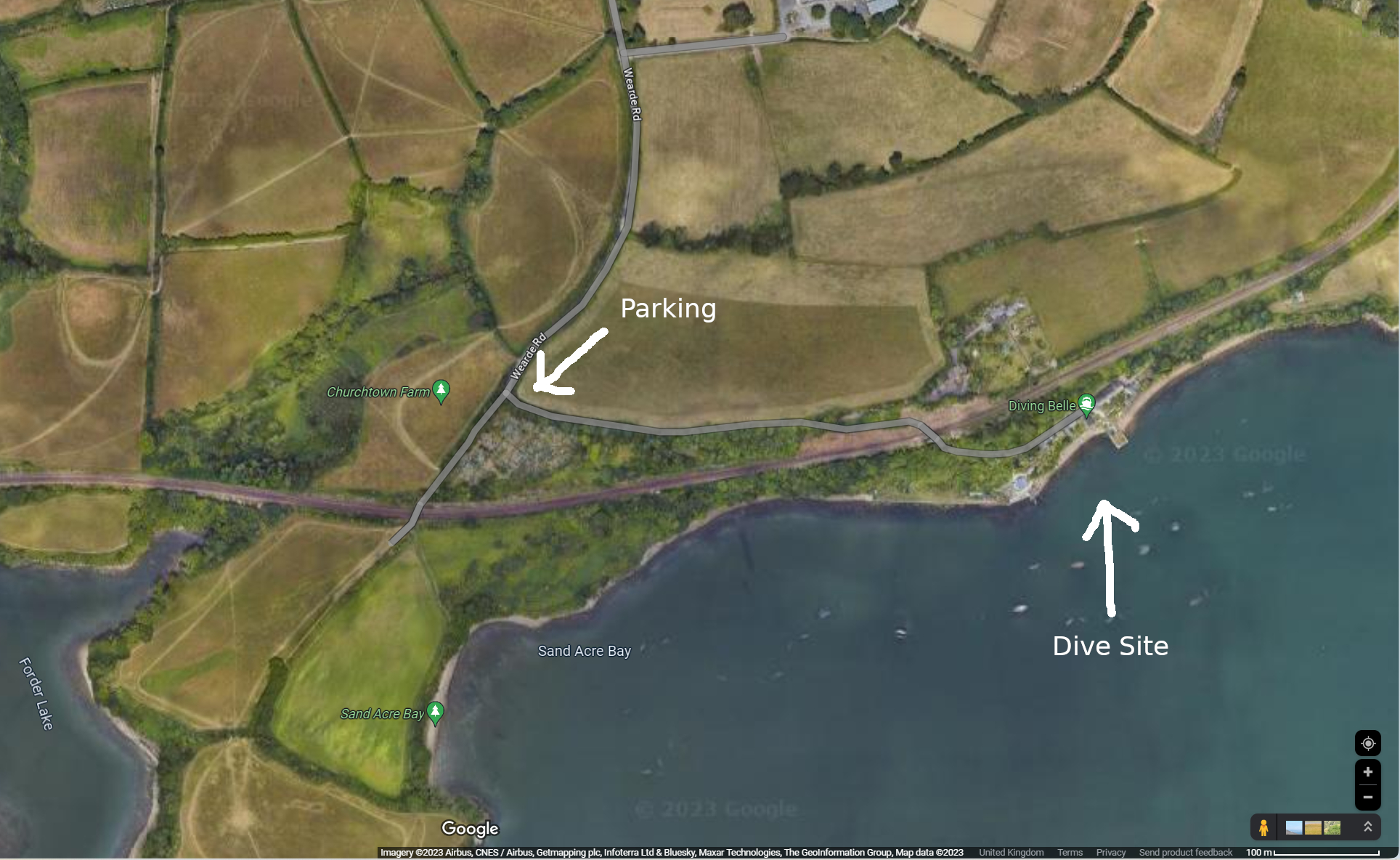
It is a tidal site, with currents up to 1.2kn at springs, and again best dived at slack (same as high/low water Devonport). Entry is via a cobbly beach, which has quite a bit of seaweed on it, so be careful not to slip.
The first habitat after entering (unless when diving at low tide) is an area entirely covered in brown sea weeds, notably bladder wrack and serrated wrack. When we go deeper (below low water spring mark), the wracks zone ends fairly abruptly, and we are on a muddy seabed covered in mollusc shells and small pebbles. The dominating molluscs here are the non-native, invasive slipper limpets, but to my delight we also found some European Oysters (and some non-native Pacific oysters).
A little deeper, there was some wreckage and other man-made structures of mostly unidentified origin and identity. It was very interesting to look around and try to make up what these structures were, even though we didn’t succeed in the end. The life on these structures was very interesting as well. I have never seen that many sea squirts colonising any substrate, with other pieces of wreckage entirely encrusted in sponges or mussels.
Dive 3 — Wearde Key again
The wind forecast for Sunday morning was unfavourable for anything on the eastern side of Plymouth Sound, so we were confined to the western side again. We decided to have another go at Wearde Quay, since it was strategically located and meant we wouldn’t have a very long drive back to Devon when wind conditions became better in the afternoon.
So we explored the bottom of the “river” again, and found even more wreckage — large metal sheets, which might have been parts of pontoons. These were inhabited by sh such as bibs, and even congers.
After our lunch break, we returned to the eastern side to scout some other shore diving sites. The first one was Jennycliff Beach in Jennycliff Bay. The site has some advantages such as free parking and amenities, however, it is quite a trek down the cliff, especially with dive gear, and going up after the dive would be even worse. Since most of us were diving twin sets that weekend (since we expected to be on a boat), we decided to do it another day. It is definitely doable for somebody with decent fitness, but this site calls for light gear.
Next on our list was Bovisand Beach. With Fort Bovisand being redeveloped and off limits, the beach is the only reasonable entry in the area. Parking is pay & display at the café, unfortunately, but the footpath down to the beach is less steep and not as long as Jennycliff Bay. However, since it was late in the day, conditions weren’t great and everybody was a bit tired, we had some tea and cake at the café instead of going underwater.
All in all, we managed to turn a trip starting as a disaster into a fairly successful exploration of two sites we haven’t dived before. Mt Edgecumbe Ferry will be great for more diving, especially at slack. Diving from the boat would also be a good option for this site, as it is a 15 min boat ride from the marina, but a 1h car drive from the same place.
In any case, we now have a few more sites in the Plymouth area for when we are blown out!
 OUUEG — Oxford University Underwater Exploration Group
OUUEG — Oxford University Underwater Exploration Group